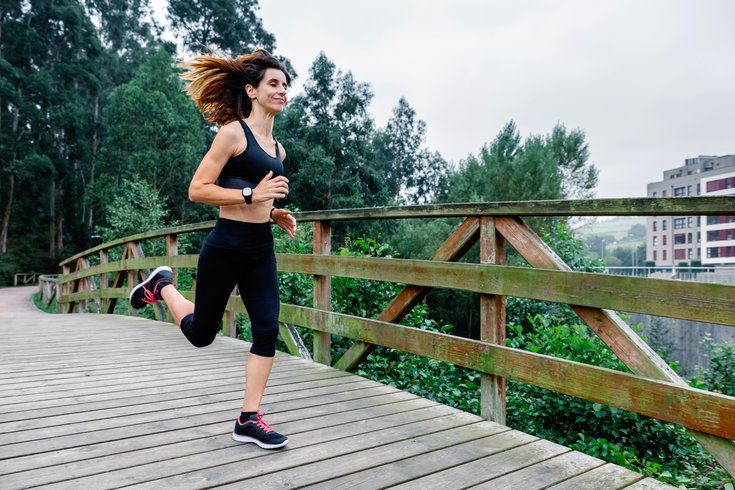
July 12, 2021
 Source/Image licensed from Ingram Image
Source/Image licensed from Ingram Image
The alignment of your whole body can affect the pressures exerted on your knees and ankles as you run, experts say. Improving your running form can reduce injury risk and increase speed and efficiency.
Our bodies are built for running – it was a necessary skill back when our predecessors had to hide from predators in the forest. Now, it's a method for us to stay fit and reduce stress and anxiety.
The alignment of your whole body can affect the pressures exerted on your knees and ankles as you run, experts say. Improving your running form can reduce your injury risk and increase your speed and efficiency.
Here are four tweaks you can make to improve your running form:
Proper posture is an important part of your running form. Instead of looking at your feet, focus your eyes about 20 feet ahead of you, Verywellfit reports.
Also, don't lean forward when running. This puts extra wear and tear on your neck and shoulder muscles. A good rule of thumb is to make sure your ears are centered right over the middle of your shoulders.
A new study from the University of Colorado Denver found that greater trunk flexion, the angle at which a runner bends forward from the hip — contributes to shin splints and knee and back pain.
The researchers asked 23 injury-free recreational runners to perform 15-second running trails at their natural trunk position and then at 10-, 20- and 30-degree angles of flexion. Runners have self-reported a wide range of angles, anywhere between -2 to 25 degrees.
The increased angles led to more flexed hips, bent knee joints and changes to the runner's feet and lower limb positions. All of that leads to a stronger ground reaction force on the body. This suggests that excessive trunk flexion could be a major factor in why certain runners are at higher risk of overuse injuries.
Ground reaction forces, according to Newton's third law, is "the force exerted by the ground on a body in contact with it." It is often measured during sports performance analysis and rehabilitation.
Over-striding is a common running mistake. This happens when a runner's front leg extends too far in front of the rest of the body on every step. This leads to the foot hitting the ground at a greater force, increasing the risk of injury.
How do you know if you are over-striding? Look to see where your knee is in relation to your ankle. The knee should be flexing right above the ankle during each step, Runners World reports. If you see the ankle ahead of the knee, you may be over-striding.
Proper running form also includes the angle of your elbows and the way you swing your arms, Healthline reports. Your elbows should be bent at a 90-degree angle and you should swing your arms back and forth from your shoulders — not the elbows.
Don't swing your arms so far that they cross over your chest. And keep your hands relaxed. Clenched hands increase tension throughout the whole upper body, experts say.
Changes to your running cadence – steps per minute – also can reduce the impact on your body. The ideal combination is to shorten stride length and increase step frequency while maintaining speed, research has found.
University of British Columbia physical therapist Chris Napier told Women's Running that you shouldn't change your step rate more than 5-10%, a reduction of 8-18 steps per minute.
There are also other ways to reduce the risk of overuse injuries. Sports medicine experts suggest not increasing running mileage by more than 10% per week. They emphasize that you should never run more than 45 miles per week.
Running through any pain is also never recommended. Make sure you are alternating training or running days with rest days so your body has time to recover.
If you are prone to overuse injuries, you may want to schedule a gait analysis with a physical therapist to check your running form.